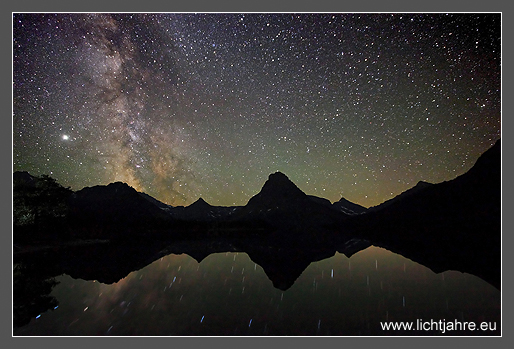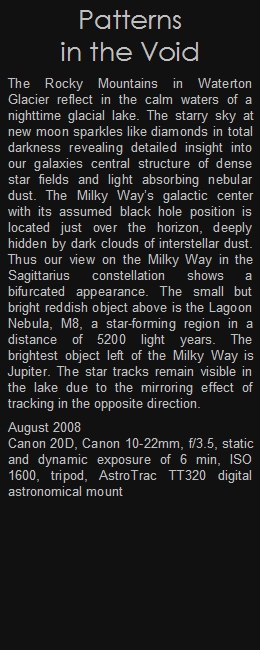

Patterns in the Void
The Rocky Mountains in Waterton Glacier reflect in the calm waters of a nighttime glacial lake. The starry sky at new moon sparkles like diamonds in total darkness revealing detailed insight into our galaxies central structure of dense star fields and light absorbing nebular dust. The Milky Way’s galactic center with its assumed black hole position is located just over the horizon, deeply hidden by dark clouds of interstellar dust. Thus our view on the Milky Way in the Sagittarius constellation shows a bifurcated appearance. The small but bright reddish object above is the Lagoon Nebula, M8, a star-forming region in a distance of 5200 light years. The brightest object left of the Milky Way is Jupiter. The star tracks remain visible in the lake due to the mirroring effect of tracking in the opposite direction.
August 2008
Canon 20D, Canon 10-22mm, f/3.5, static and dynamic exposure of 6 min, ISO 1600, tripod, AstroTrac TT320 digital astronomical mount




















